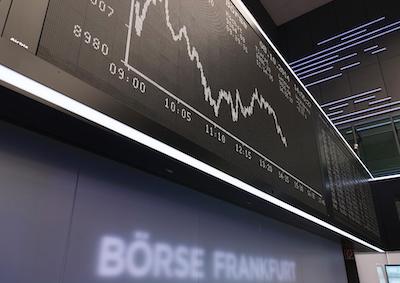By Mark McSherry
The global mutual funds industry in 2022 suffered the biggest fall in assets under management (AUM) since the global financial crisis (GFC) of 2008, according to Calastone’s latest global fund flows report.
Amid the bear market of 2022, assets fell 21% from 2021’s record to $56.2 trillion.
The $14.7 trillion decline was the largest ever in value terms, but the percentage fall was bigger in 2008.
The report said stock funds saw outflows in 2022 of $13.3 billion, equivalent to one quarter of 2021 inflows.
It said outflows were driven “by a buyers’ strike rather than higher selling” and that investors were most pessimistic in Europe and the UK but were more optimistic in Asia-Pacific and Australia.
Smaller companies “were crushed by rising risk aversion” said the report.
By the middle of January 2023, stock and bond markets had rebounded from their September 2022 lows, suggesting AUM will have clawed back around $7 trillion of its losses, Calastone said.
“The bear market delivered the worst year for the global mutual funds industry since the Global Financial Crisis,” said the report.
“Assets under management peaked globally at $70.9 trillion at the end of 2021, but had fallen by 21% to $56.2 trillion by the end of September 2022.
“This was almost entirely due to sharply lower asset prices – the MSCI World (an index of equity markets) fell by 26.5% between Q1 and Q3, and fixed income indices were also markedly lower.
“Outright fund outflows also played a small role, in contrast to the usual process of steady accumulation of savings.
“In value terms 2022’s decline in AUM was the largest the industry has experienced on record, though in percentage terms, the 26% fall between Q1 2008 and Q2 2009 was larger.
“Lower AUM naturally bring lower fees too, meaning the elimination of cost and friction, Calastone’s raison d’etre, is even more important for fund managers …
“The impact was most marked in the UK and Europe, where assets under management measured in US dollars fell by over a quarter.
“This reflects a natural home-market bias in portfolios and the effect on their dollar valuation caused by the sharp fall in the value of the pound, euro and other European currencies during the year.
“Measured in local currencies, which better reflects the lived experience of each investor, the value of assets in almost every country in Europe (including the UK) fell less than the 21% decline in US assets under management.
“Seen through this lens, that same home-market bias was helpful, because European equities outperformed their US counterparts.
“Moreover, a significantly larger weighting to fixed income funds around Europe (though not among UK investors) was also part of the story. These fell less than global equities in the first nine months of 2022.
“Meanwhile, the home-market bias and high equity weighting in US portfolios meant heavier exposure to the overvaluation of US tech companies that have seen their values crash since the bear market began.
“In dollar terms, AUM in Asia-Pacific (which includes Australia) fell by one seventh between January and September 2022, with the biggest decline in Japan, thanks mainly to the weak yen.
“A large weighting in these markets (including Australia) to both financials that benefit from rising interest rates and resources companies that have enjoyed high commodity and energy prices helped support AUM in the region.
“By the middle of January 2023, stock and bond markets had rebounded from their September 2022 lows, suggesting AUM will have clawed back around $7 trillion of its losses, or around half the decline suffered in the first nine months of last year …
“US investors maintained their share of global assets at the expense of those in Europe, the UK and Japan, while those in China, Australia and some other parts of Asia increased theirs.
“At the end of September 2022, US investors owned 48.2% of the world’s mutual fund assets.
“This was almost unchanged since the end of 2021, mainly because the strength of the US dollar offset the larger decline in US asset prices than in many other parts of the world.
“Fund outflows were also smaller in the US than they were in Europe, despite the former being a significantly larger mutual fund market.
“Europe’s share of global assets fell by just under two percentage points to 30.8%, while those in Asia-Pacific ex Japan rose 1.3 percentage points to 15.3%.
“Chinese investors have continued their steady accumulation and now own 5.8% of global mutual fund assets (up from 5.0% at the end of 2021), while those in Australia saw their share rise to 4.0% (up from 3.7%) …
“Asset preferences vary widely. Globally pure equity funds account for 44% of AUM, but this share is as high as 56% in the US and as low as 32% in Europe.
“The UK is more like the US, with half of AUM in equities, though by the time the equity portion of mixed asset funds is factored in, the UK and the US have a broadly similar exposure to shares.
“Europeans also have a notable preference for mixed asset funds, so their true equity weighting is higher than pure equity funds suggest, but it remains well below the level in the US. In Asia-Pacific markets outside Australia money market funds absorb a larger share of savings than elsewhere in the world, especially in China.
“Globally, fixed income makes up exactly one fifth of total AUM and property 2%. Europeans and Australians favour property funds much more than the global average.”
